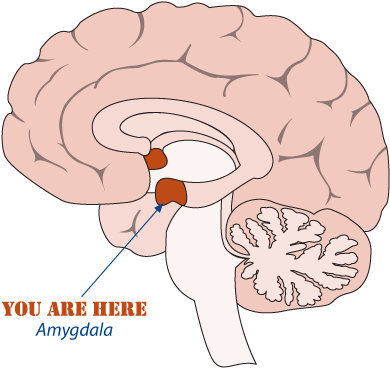Fear: Avoiding Death
Pleasure isn't the only tool at your brain's command. Its obvious complement is pain, which alerts your brain when you've crushed a toe or broken a tooth. However, most of us think of pain as part of perception rather than an emotion. (For the moment, we're ignoring psychological states that might be described as painful, such as sorrow, grief, and despair.) And though the line is a bit blurry, pain kicks in at a lower level. Your body has specialized neurons that perceive different types of discomfort and notify your brain about the problem. There isn't much room to wiggle out of it.
A more interesting comparison is between the motivation of desire, which pulls us toward certain things, and fear, which pushes us away. Much as the brain has a sophisticated pleasure circuit to reward good deeds, it also has an intricate fear circuit for reacting to potential dangers. It's almost like the brain is a very old school parent, bribing us into the right behaviors and smacking our mental bottoms to get us out of harm's way.
The fear circuit is rooted in two small almond-shaped brain regions called the amygdala (there's one in the left side of the brain, and one in the right side). The amygdala is buried deep in the brain, underneath the pleasure circuit.

Figure 6-3.Â
Note
Pleasure and fear are the two fundamental poles of the brain's emotional self-preservation system. Other ...
Get Your Brain: The Missing Manual now with the O’Reilly learning platform.
O’Reilly members experience books, live events, courses curated by job role, and more from O’Reilly and nearly 200 top publishers.

